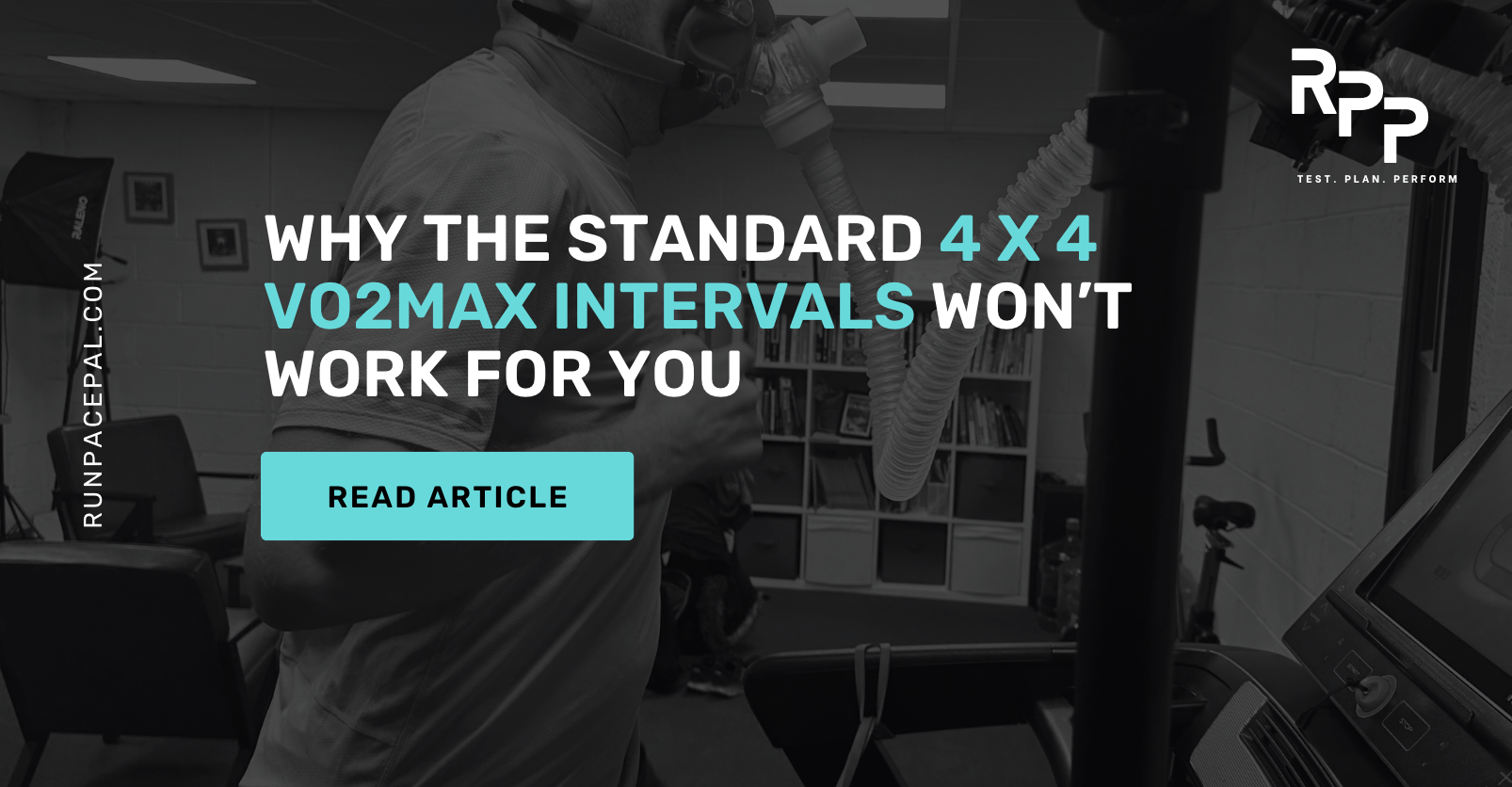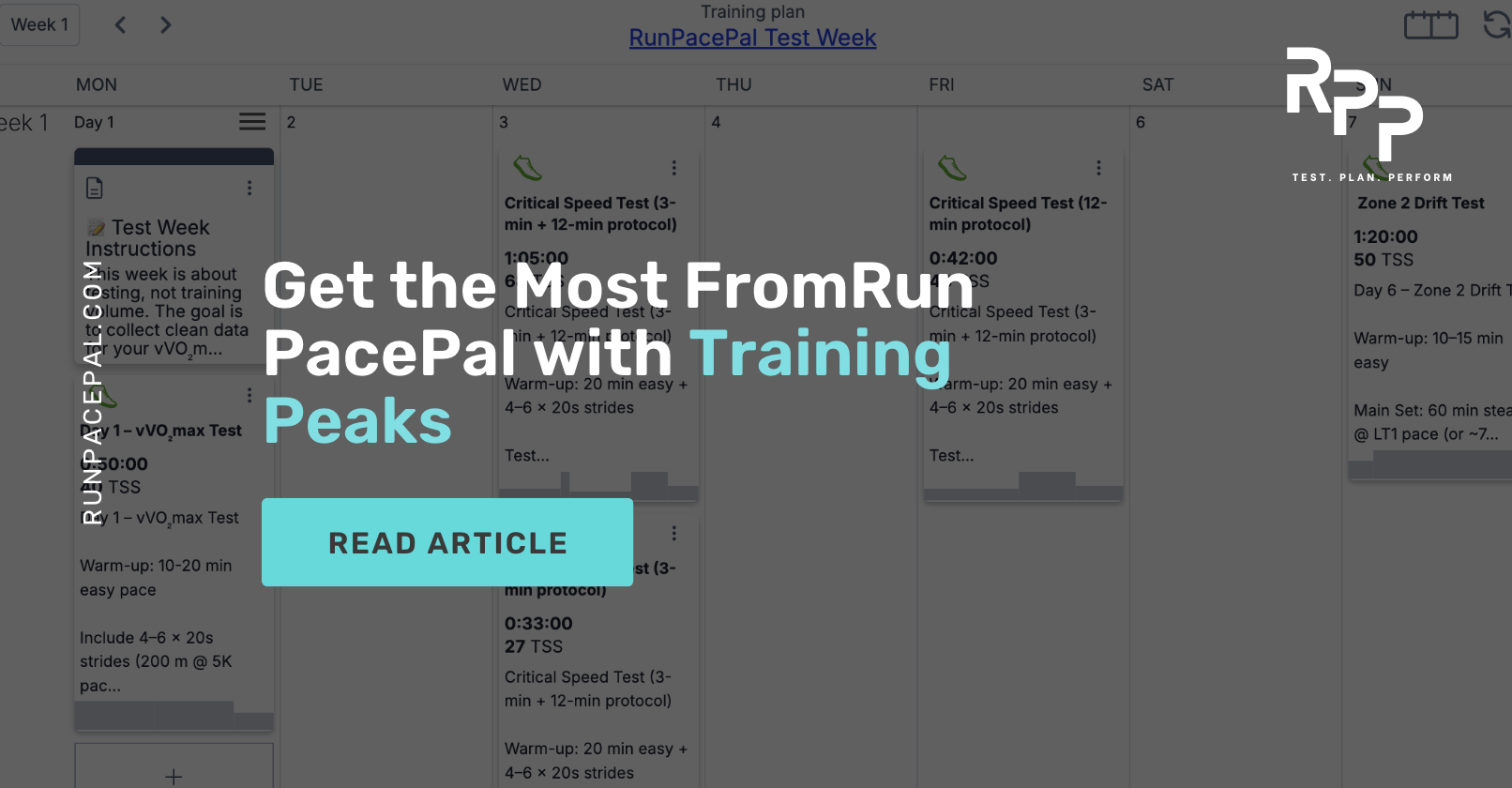VO₂max Intervals: Billat 30/30s and the Science of Getting Faster
If VO₂max is your aerobic engine size, VO₂max training sessions are how you upgrade the engine. One of the most famous workouts in endurance sport is the Billat 30/30 — alternating 30 seconds at vVO₂max pace with 30 seconds jog recovery.
But here's the secret: there's more than one way to train VO₂max, and the best protocol depends on your physiology.
🔬 What Is VO₂max Training?
VO₂max is the maximum rate at which your body can use oxygen. Training at or near this intensity:
- Improves oxygen uptake — your body becomes more efficient at delivering oxygen to working muscles
- Increases capillary density — more blood vessels = better oxygen delivery
- Pushes up your velocity at VO₂max (vVO₂max) — you can run faster at the same effort
In practice: VO₂max training makes you faster, more durable, and able to handle race intensity with less effort.
🏃 Types of VO₂max Workouts
Billat 30/30s
- 15–25 reps of 30s fast @ vVO₂max / 30s jog recovery
- Builds time spent at VO₂max with less fatigue
- Ideal for: Maintaining high oxygen uptake without excessive lactate accumulation
Research by Billat et al. demonstrated that intermittent runs at vVO₂max allow athletes to spend more total time at VO₂max compared to continuous running, making this protocol exceptionally effective for aerobic power development.
Extensive VO₂max Intervals
- 4–6 × 3–5 min @ 95–100% vVO₂max
- Great for 5K/10K preparation — builds race-specific endurance
- Ideal for: Athletes who can sustain threshold for extended periods
Intensive VO₂max Intervals
- 8–12 × 60–90s @ 105–110% vVO₂max
- Develops top-end power — pushes beyond vVO₂max to recruit fast-twitch fibres
- Ideal for: Building speed reserve for shorter races (800m-5K)
Hill VO₂max Workouts
- Short uphill reps at vVO₂max effort
- Builds strength and running economy — combines aerobic and neuromuscular benefits
- Ideal for: Developing power and reducing injury risk
📊 How Run Pace Pal Simplifies VO₂max Training
Inside Run Pace Pal, the VO₂max Protocols tool gives you:
- Billat, Extensive, Intensive, and Hill sessions — already built and personalised
- Prescribed speeds/paces based on your VO₂max field test results
- Automatic progression so sessions adapt as you improve
- Heart rate targets to ensure you're hitting the right intensity
👉 Try it today: Run Pace Pal VO₂max Protocols
🧪 The Science Behind VO₂max Training
Dupont et al. (2002) showed that intermittent runs at 110–120% of maximal aerobic speed (MAS) keep athletes at high VO₂ values longer than continuous runs — the basis of protocols like Billat 30/30s (PubMed 12179954).
Billat et al. further demonstrated that running to exhaustion near VO₂max pace reliably predicts Critical Speed and threshold capabilities in trained runners (PubMed 9338084).
Key insight: The optimal VO₂max protocol depends on your race distance, current fitness, and physiological profile. There's no one-size-fits-all approach.
⚡ When to Consider Lab Testing
Field tests + app sessions get you training right away. But if you want to know your exact oxygen uptake and thresholds with gold-standard precision:
At Box Nutrition, we run:
- VO₂max mask testing → direct oxygen measurement
- Lactate analysis → shows how VO₂max links to LT1 & LT2
- Consultancy support → how to combine VO₂max work with threshold and Zone 2
👉 Book your VO₂max or lactate test here: boxnutrition.co.uk/book-online
✅ Key Takeaways
- VO₂max = your aerobic engine size — training at this intensity makes you faster
- Billat 30/30s are famous, but extensive, intensive, and hill VO₂max sessions can be just as effective
- Run Pace Pal builds these sessions for you — based on your own physiology from field tests
- For gold-standard testing, confirm your VO₂max in the lab with Box Nutrition
Stop guessing. Start training with precision.
Want to discover your VO₂max and build personalised interval sessions? Get started with Run Pace Pal's free VO₂max calculator or book a lab test with Box Nutrition.



